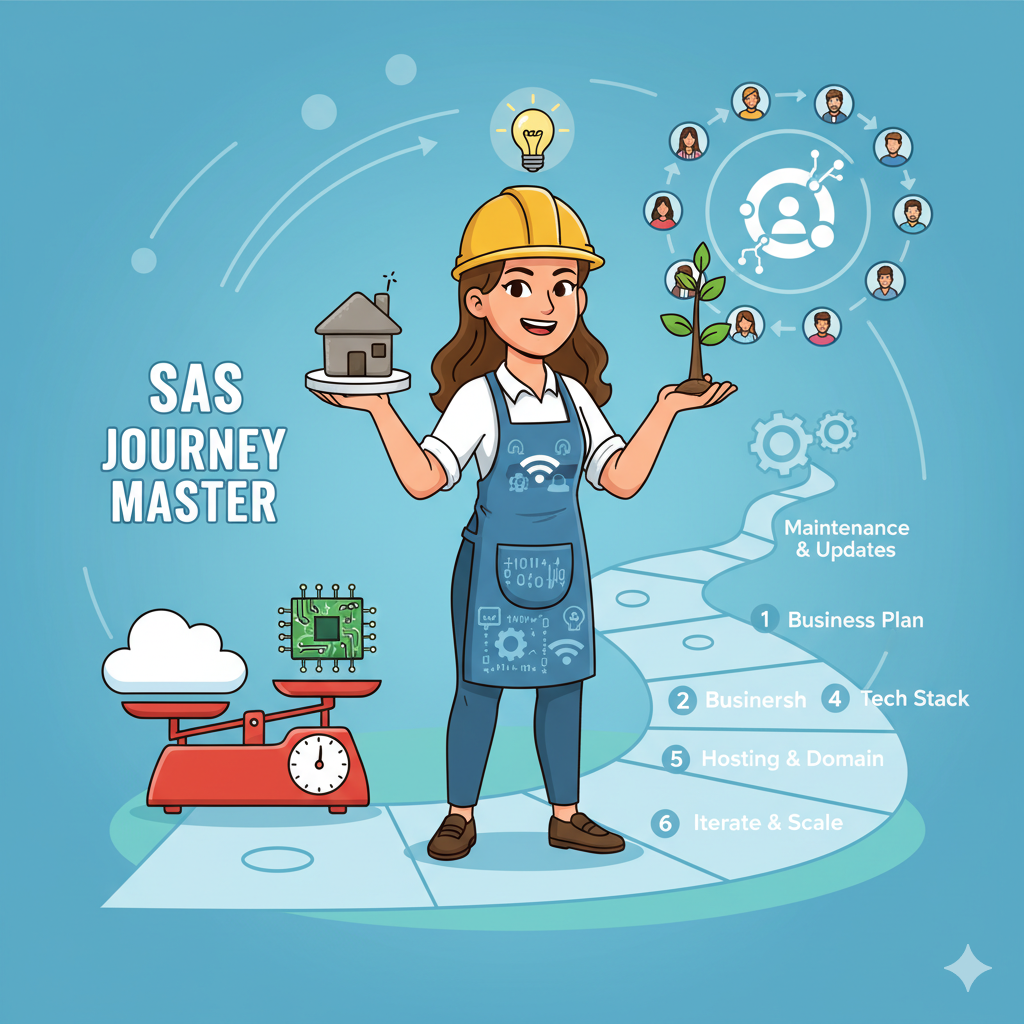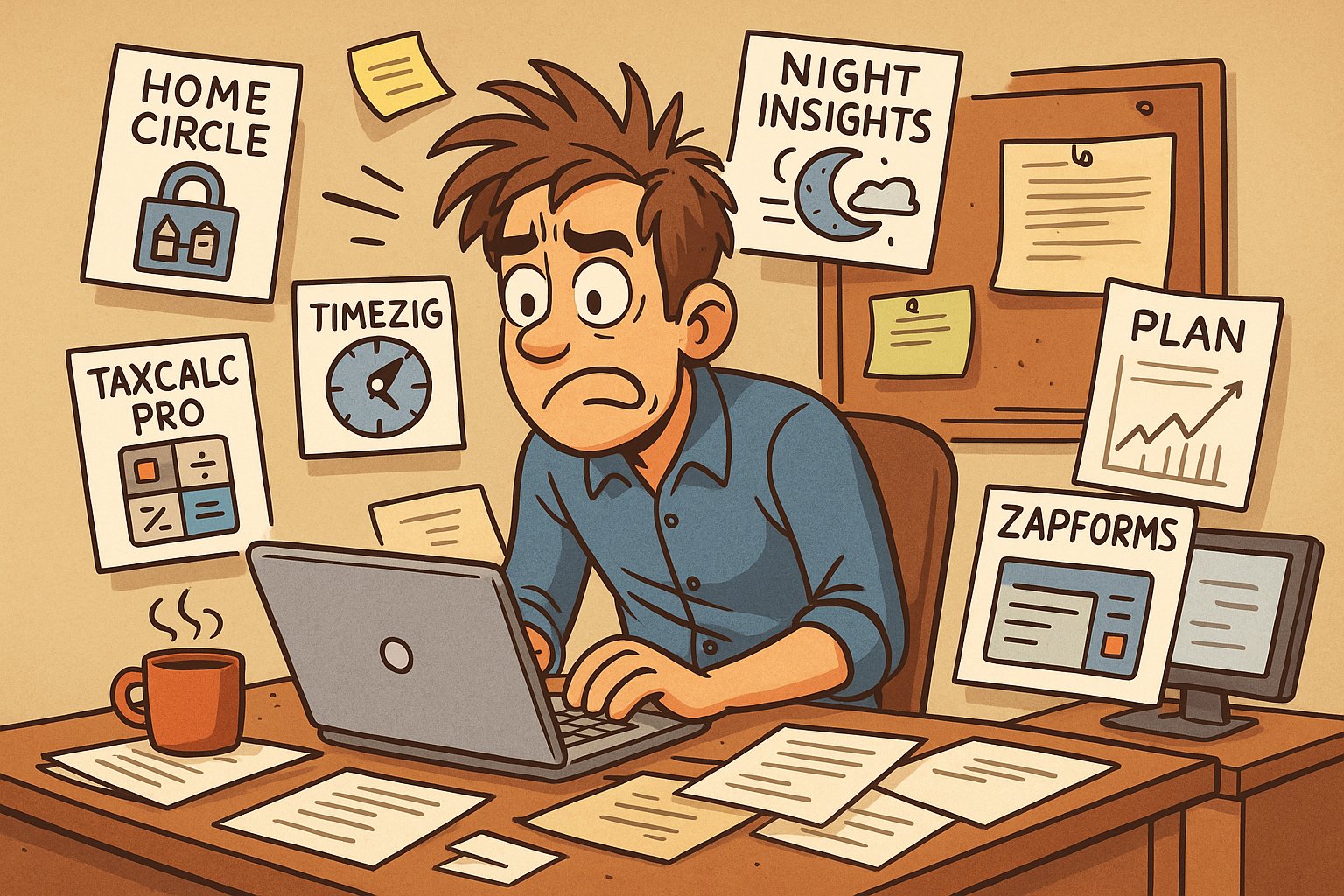In the fast-paced world of startups and software development, there’s often a temptation to build and release as many products as possible in the shortest amount of time.
The idea is simple: the more you build, the higher your chances of striking gold.
On paper, this sounds exciting, but in practice, it often leads to burnout, wasted effort, and products that don’t reach their potential.
The story from Reddit.
A Reddit user shared their experience of building 11 SaaS products in 6 months, ultimately earning a total of $45. The post highlights the challenges and realities of rapidly launching multiple software-as-a-service projects.
Despite the modest revenue, the experience provided valuable insights into the development process, market demand, and the importance of persistence in the entrepreneurial journey.
Here, I is the list of SaaS products built.
HomeCircle – Password manager for families.
FlouState – Developer productivity tracker.
TaxCalcPro – Salary calculator for 39 countries.
Night Insights – AI dream journal.
TimeZig – Timezone converter and meeting planner.
OneDollarChat – Global chat where each message costs $1.
WebhookBox – Easiest way to test webhooks.
ZapForms – Form builder with instant APIs.
CostOfLiving – Salary comparison tool.
Purpose Reminders – One simple good deed a month sent via email.
Portfolytics – Better Google Analytics dashboard.
Overall: The User spent 6 months rapidly building and launching multiple micro SaaS products, earning very little money.
Here is the link to the Reddit post:
While this experiment is fascinating, it also reveals some gaps in approach that are worth discussing.
So my problem with this approach starts here, actually, it’s not a problem. Going full rampage on development and releases will affect each aspect of your life. There are a few that succeeded, but many tried.
Developing 11 Saas products in 6 months is hard, very hard to make them properly, even though the apps are simple. Going like this, you will focus on developing only, in my opinion, you will skip important steps in building an app, waste money, and this will create anxiety and frustration.
In my opinion, building apps is not resumed to writing code, bad or good, I will not doubt the user’s capability; maybe vibe-coded or maybe it’s a GOD we don’t know.
The gaps I see in the article are :
- Propper planing
- What problem does he want to solve?
- How are the products solving that issue?
- What is the marketing strategy?
- How do you keep current users and gain more?
To address these gaps, here’s a step-by-step process I follow when starting a project.
Building an app involves several important steps before you write a single line of code.
1. Understand the Business and Define Core Functionalities
Before starting, have a deep understanding of the business domain and a clear vision of what your app will accomplish. Make a list of core functionalities—the essential features that solve the main problem. Refine these ideas iteratively: talk to potential users, gather feedback, and research the industry. Even if you are familiar with the field, both people and technology evolve constantly, and there is always room to improve processes, enhance experiences, and innovate existing solutions.
Avoid trying to solve too many problems at once, as this can be overwhelming. If you find it hard to clarify your ideas, seek guidance from someone experienced.
2. Think Ahead and Leave Room for Growth
Always plan at least three steps ahead. Design your app to be flexible, leaving room for improvements, extensions, and future features. Avoid building something rigid that cannot evolve.
3. Create a Roadmap and Break Down Features
Building a roadmap for your solution is crucial. Breaking features into smaller, deliverable chunks makes development manageable and ensures steady progress. Granularity helps you organize priorities and focus on incremental delivery.
4. Plan Your Technical Stack and Providers
Once your ideas are aligned and you have a clear direction, begin the technical planning. Consider:
- How will you solve problems
- What tech stack to use
- Which hosting providers to choose from
- Which third-party services to integrate
Even minor decisions can have financial implications. Compare options carefully and choose the best solution for your app and domain.
5. Select MVP Functionalities
For your minimum viable product (MVP), select the most desirable functionalities that are essential for your app while also making it attractive to users. Focus on features that provide value and can differentiate your app in the market.
Also, during the MVP stage:
- Develop a marketing strategy to gain early users.
- Implement metrics and analytics to understand user behavior and identify hot spots in the app.
- Speak with users and gather reviews; if something is not working as expected, don’t be discouraged—your goal is to solve problems and create value, not just please yourself.
Even if the MVP doesn’t generate revenue initially, early users provide valuable insights on what’s missing or what needs improvement. Based on feedback, adjust your roadmap carefully. Not every suggestion is worth implementing—ideas must be refined, reviewed, and prioritized.
6. Post-MVP: Growth, Maintenance, and Continuous Improvement
After the MVP, the real challenge begins:
- Gain more users
- Constantly add features for existing users.
- Extend and maintain the app.
No application is completely bug-free. Tests are meant to catch possible issues, but you will encounter problems no matter how thorough your testing is. This is why planning your stack carefully is crucial.
A few additional strategies:
- Implement a newsletter or update system to keep users informed about new features and resolved issues.
- Stick to release timelines; delays erode trust.
- In the first weeks after MVP launch, focus on ensuring the app works reliably and fulfills its main purpose.
This process may seem slower compared to launching many apps quickly, but it ensures stability, clarity, and long-term growth.

This is a short description of how I approach starting a new project. Of course, the exact process may vary depending on the business, but these steps are broadly universal and can be applied in most cases.
Instead of building 11 apps in six months, a better approach is often to refine the ideas, choose one, and plan it properly. With proper planning, research, and execution, it’s possible to generate more revenue from a single well-thought-out app than from a dozen rushed ones.
I’m not contesting the skills of the user who built 11 apps; rather, I’m emphasizing that focus and planning can lead to stronger results and a more sustainable product.
Have fun and keep coding.
